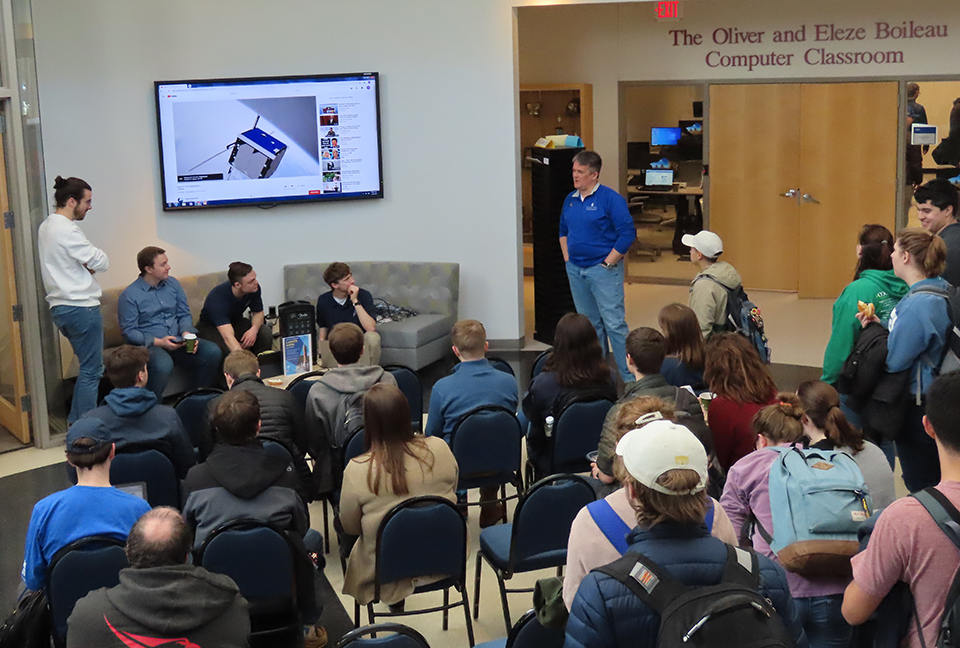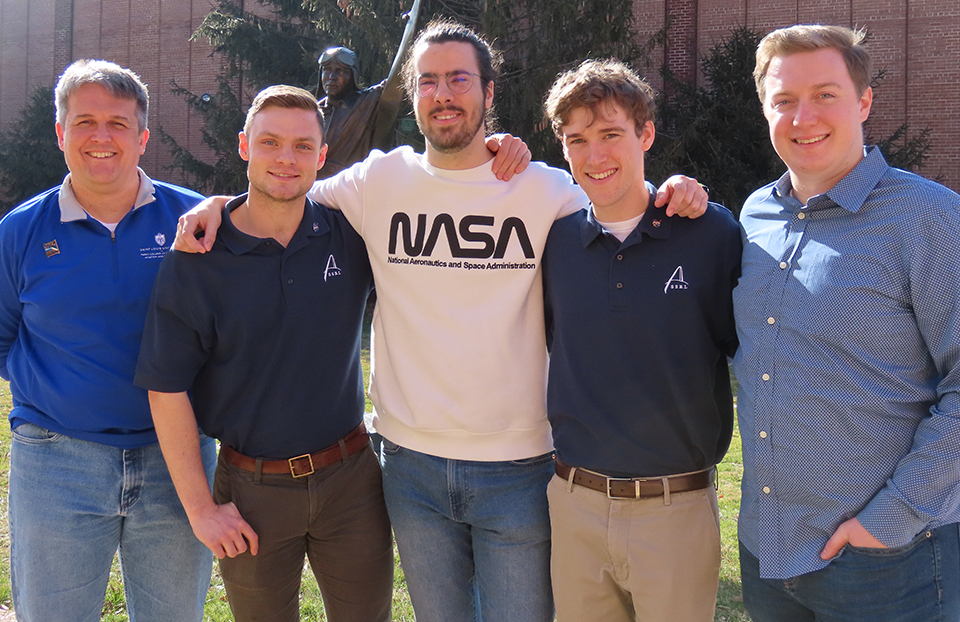SLU's Argus-2 Satellite Successfully Launched From International Space Station
Maggie Rotermund
Senior Media Relations Specialist
maggie.rotermund@slu.edu
314-977-8018
Reserved for members of the media.
The Saint Louis University-built Argus-2 satellite successfully launched into orbit from the International Space Station (ISS) on Wednesday, Feb. 19. The satellite was built by a team of faculty and students at Parks College of Engineering, Aviation and Technology.
The campus community was invited to join students and faculty watch the launch from McDonnell Douglas Hall. A video glitch led to a listening party instead of a watch party, but the crowd celebrated the successfully push from the ISS just the same.
Wednesday’s launch was also a milestone for NASA. With the deployment of satellites from the ISS, the agency celebrated 100 CubeSat launches through NASA’s Educational Launch of Nanosatellites ELaNa program.
A CubeSat is a small satellite which helps play a valuable role in NASA’s exploration, technology, educational, and science investigations. Each CubeSat must demonstrate its benefit to NASA by addressing aspects of science, exploration, technology development, education, or operations consistent with NASA’s strategic goals.
The Argus-2 was No. 99.
The 4-by-8-inch, 6-pound Argus-2 was carried to the ISS in November on board a Northrup Grumman rocket. SLU’s original Argus was lost to rocket failure in 2015.
Argus-2 first takes on some of the original Argus mission; the satellite will fly with a commercial SD memory card, and SLU’s lab will be routinely checking it for errors.
The second objective of Argus-2 is to take a baby-step towards SLU’s next space project, called DORRE. DORRE will be a small constellation of two or more spacecraft and two or more ground systems (telescopes).
AI techniques will be used to automatically detect and sense natural events, such as auroras, thunderstorms or meteors.
Read more about SLU’s space history
“The long-term goal of DORRE is to demonstrate that we can move control of the mission from the ground (where all major decisions are made by people) up to the spacecraft,” Swartwout said. “Such a move is needed to enable better use of the limited communications resources and round-trip light delays for deep space missions to let the spacecraft more rapidly detect and respond to interesting, short-term science events.”
Saint Louis University is a Catholic, Jesuit institution that values academic excellence, life-changing research, compassionate health care, and a strong commitment to faith and service. Founded in 1818, the University fosters the intellectual and character development of more than 13,000 students on campuses in St. Louis and Madrid, Spain. Building on a legacy of now more than 200 years, Saint Louis University continues to move forward with an unwavering commitment to a higher purpose, a greater good.



















